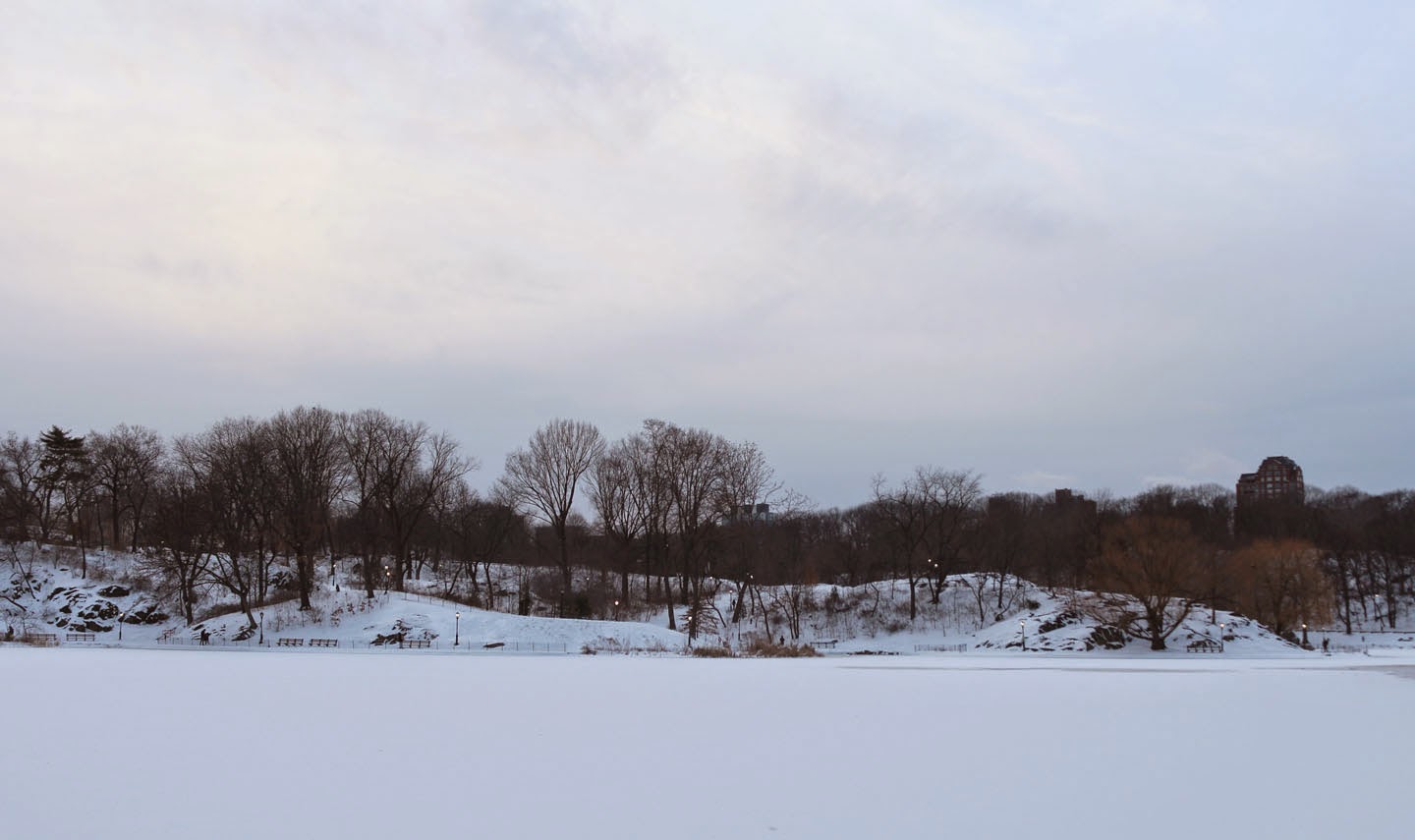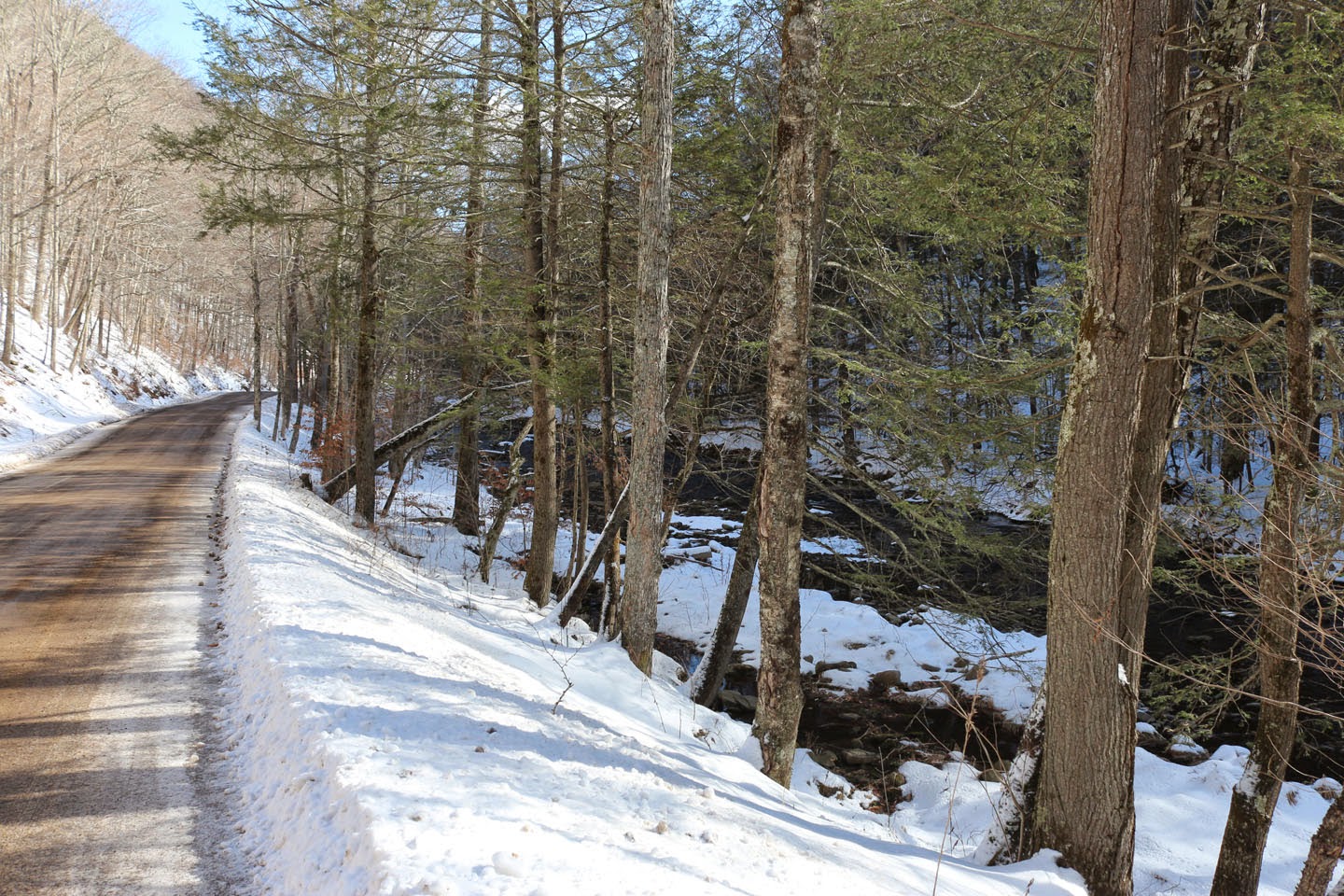Thursday, January 29, 2015
Wednesday, January 28, 2015
Blizzard in the hood
Our blizzard was fairly gentle apart from a few hours of sideways snow, which was when I chose to go out. With an umbrella. All the Canadians I know mocked me. Apparently umbrellas are gauche in snow. Whatever. I wanted to keep my lens dry.
At The Wild Olive, where I bought some sad cilantro, I met Chanel, who was one well dressed dog. She hates the cold, said her owner. Chanel shivered, but perked up when I called her name.
127th under a dusting. We now have very small drifts under a blue and freezing sky.
The temperature in the bedroom is 57'F. The cold bedroom doesn't bother us as we keep the doors to it closed, and we love our warm bed and feather comforter. And I love my hot water bottle. The large main room is quite toasty, with one space heater. Our heating bill is halved, and we are much warmer than last year, this time, when we had the built-in electric heaters on low and the bill set to maximum.
Labels:
New York Winter
Tuesday, January 27, 2015
Snow, some
... the result of the blizzard, on the terrace. It is very pretty.
For New York City it was a damp squib, but eastern Long Island and parts north are seeing real snow accumulation. Ours did not come close to either of our last blizzards, in 2010 and 2006.
Blizzard 2006
Vince walked to work this morning since there were no subways and his day starts very early (5.5 miles in 1 hour 40, he said - Hey. He's Canadian. Whaddayagonnado?). He could not take a cab: There was still a travel curfew.
I know weather is very hard to predict, but it was very silly to ban travel after 11pm, and idiotic to stop the subways in the city that never sleeps.
More snow pictures later, if you can stand it.
Labels:
Harlem terrace,
New York Winter
Monday, January 26, 2015
Before the snow, the snow
It seems ironic, now, that we headed for an overnight snow break into the Catskills. Wet snow had fallen on Friday night and the trees along the way were beautiful with it, temperatures hovering just under freezing.
Nobody knew anything about a Monday blizzard, on Saturday.
I love road pictures. Mine, other people's. Snapped as it was, as it disappears.
We don't talk much when we're driving.
There was barely any traffic, on the way out.
Time for a coffee break. With a nip of cognac.
And then back to the snow.
The character of trees is very strong in the winter.
The evergreens come alive.
We saw no deer.

We saw many, many icicles.
We stopped for lunch beside New York City's water supply. Or ice supply.
Quick tomato soup from a thermos.
With sourdough sandwiches.
And then we were in Woodstock, at the Inn on the Millstream. We've stayed here before with my mom, in the fall. I love it. Simple, and exactly what we needed. I slept better than I have in six Harlem weeks. No thumps in the night, no phantom bumps in the basement at 3am. No drilling in the walls, no hammering during dinner, no slammed doors. Smooth, white silence. The roses were waiting, from the lovely Frenchman. It was our anniversary.
The sun was out the next morning and after a walk to the stream (below), we ate a smoked salmon and bagel breakfast (only the coffee could be improved) and made friends with the resident small, friendly black lady-cat.
And then we set off again to one of our favourite places.
Under the sun, snow was melting.
But in the narrow valley we'd visited in every other season but this, the mountains kept the slopes frozen.
Icicles six, ten feet long.
This is the road where coltsfoot blooms in April.
Our Zipcar, resting from zipping.
A few falls ago we picnicked at this table with my mom. Even then, under the yellow leaves, we froze.
The rock where we picnicked last summer.
This prettiest of rivers, last seen under green leaves.
In spring trout lilies, winter cress and false hellebore come up beside the water. Yellow violets and trillium bloom on the slopes.
Time to go home, under a blue sky.
And a snowless George Washington Bridge.
Not snowless for long. They say.
Friday, January 23, 2015
Strandveld
We stayed for four nights at the De Mond Veld Cottage, half an hour's drive from Bredasdorp, on the Heuningnes Estuary. This gave us plenty of time for walking in the dunes nearby, where the southern Overberg fynbos is very different from the Cape peninsula iteration, which I know better. I was surprised to find succulents, for instance.
This is a creeping aloe, perhpas Aloe perfoliata. Even though it's indigenous to the Western Cape I am guessing it was planted outside the abandoned cottage next door to ours, before it was abandoned.
The clump was always filled with Cape sugar birds (below) and malachite sunbirds. Whenever we went to look at them we paid very close attention to our feet, as we'd been warned about snakes, which in these parts would be either puffadders or Cape cobras. Neither of which is to be trifled with (later we saw a puffadder - my first - at Cape Point, and it was gorgeous. I had no idea how bright its markings would be. I think the Frenchman got a good picture).
Every morning, round about our own breakfast time, a crew of small tortoises came to eat the flowers that opened every day in the lawn. While they ate a mole would kick up his mound behind them.
Their breakfast: Falkia repens, in the Convolvulus family.
Behind the cottage a path led into the fynbos and we followed this for a promised circular walk, me in flipflops, still watching my feet.
So much was fragrant. A lot of Agathosma (buchu). I tend to crush leaves as I go, sniffing and testing, and was very inspired by the good things I smelled.
Above, too prickly to crush, tortoise berries, Nylandtia spinosa.
The beautiful shrub above was abundant and I brought some twigs home. Their fragrance was citrussy and strong. It is Othiolobum bracteolatum, known in Afrikaans as skaapbostee (sheep bush tea). I'd like to know more about that. Regardless, it was part of supper, that night.
In the weathered rocks stunted plants grew.
This was the surprise. A plant I'd only ever seen as a potted ornamental: Aloe brevifolia [thank you Eban!]. Everywhere, in these impressive colonies.
Many of the colonies were just past prime bloom and the veld was dotted with their orange spikes.
A Haworthia, below, maybe Haworthia minima.
Below, Athanasia, I think, but I don't know the species.
A geophyte surprise on a slender stalk, and leafless. Fire lily, suggested the Southern Overberg South African Wildflower Guide, and probably Cyrtanthus ventricosus (not in that book). But no fire...so a mystery. We saw half a dozen, spread out.
Below: Nope, no idea. Help?
Better known wild rosemary, Eriocephalus africanus.
There were masses of these tufts of a little restioid grassy thing, like a loose, tall lawn. I am not sure what they are. No taller than 10" - 12"/30cm.
At first we followed the path which led us right the way to the Cape Nature reserve at De Mond, and then we circled, as intended, but later lost our path. So we bushwacked back. Watching our feet.
Not before we found something container-grown, though. Old flotsam. Or jetsam. Or neither:
"Flotsam is defined as debris in the water that was not deliberately thrown overboard, often as a result from a shipwreck or accident. Jetsam describes debris that was deliberately thrown overboard by a crew of a ship in distress, most often to lighten the ship's load." Source - NOAA
We were better prepared the next day. No fence-walking for us. We entered through the park, properly, showing our Wild Cards and signing in. That was the blue day.
Here on the flats the tide rises enough to wet these saline-tolerant plants.
The only vehicles allowed belong to rangers or researchers.
The beautiful, succulent grey and lilac plant is called soutbossie in Afrikaans - salt bush. Bassia diffusa.
Our old friend Limonium (scabrum, I think) last seen in the Knysna lagoon.
Below. No idea. Very interesting.
A vygie flowering out of season, possibly Lampranthus.
Salicornia, also last seen in a similar zone in Knysna. Super-salty - good to eat.
Below, a mix of dune spinach (Tetragonia decumbens) and soutbossie again.
Carpobrous edulis,the sour figs. At the gate of our cottage a huge patch grew and those ones I used for our dinner, too.
That dinner cooked slowly all afternoon while we visited Arniston.
Wild rosemary, skaapbostee and the seedy syrup of the sour figs, plus some local, early grapes, with the lamb shanks.
Later a fog bank moved in off the sea and over the dunes towards our cottage.
We sat outside on the stoep for supper, with the flickering candles and the cicadas, listening to the occasional buzz and pop of the power lines in the dark, watching the stars of the Milky Way disappear in the cloud we could not see.
Labels:
Flora,
Food,
Foraging,
Meals for We,
South Africa
Subscribe to:
Comments (Atom)






































































